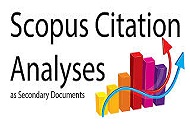Dampak Perkembangan Teknologi Informasi dan Komunikasi Terhadap Perilaku Moral Remaja di SMA Negeri 3 Kota Kupang
DOI:
https://doi.org/10.33394/jk.v5i1.1395Keywords:
Technology, Information, Communication, Morality, StudentAbstract
References
Ardiantofani, C. (2014). 30 Persen Kasus Aborsi di Jatim Pelakunya Remaja. http://surabayanews.co.id/2014/08/18/3745/30-persen-kasus-aborsi-di-jatim-pelakunya-remaja.html. Diakses tanggal 9 Desember 2014.
Asmani, J.M, (2011). Tips Efektif Pemanfaatan Teknologi Informasi dan Komunikasi dalam dunia Pendidikan. Jogjakarta: DIVA Press.
Caroll, L.A dan Kirk Patrick (2011). California Adolescent Health Collaborative Impact of social media on adolescent behaviora lhealth.. California : International Journal. Diakses 1 Januari 2016
Ezziane, Narvaes. (2007). Information Technology Literacy: Implications on Teaching and Learning. Educational Technology & Society, 10 (3), 175-191.diakses 26 Desember 2016
Hadisaputro, P. (2004). Studi Tentang Makna Penyimpangan Perilaku Di Kalangan Remaja. Jurnal Kriminologi Indonesia Vol. 3. No. 3 : 9-18.
Hilman A. M. (2005). Mengapa Anak Kita Perla Pendidikan Seksualitas. HDA Publishers. Bandung.
Holisah, L. (2014). 2014 adalah Tahun Penyelematan Pengguna Narkoba. Dalam Jurnal Pendidikan, Diakses tanggal 23 Desember 2016
Judi Muhamad Hairuliza,Sahari, Zin,Yusof (2013) . Framework of ICT Impact on Adolescent :Centre of Information Technology, Faculty of Information Sciences and Technology: Universiti Kebangsaan Malaysia
Julianti. (2013). Internalisasi Nilai Toleransi melalui Model Telling Story pada Pembelajaran Pkn untuk Mengatasi Masalah Tawuran (Studi Kasus Tawuran Pelajar Sekolah Menengah di Sukabumi). Jurnal Penelitian Pendidikan, Vol. 14 No. 1 : 1-12., diakses 20 desember 2016
Kaplan, H.I., Sadock, B.J., & Grebb, J.A. (1997). Sinopsis Psikiatri: Ilmu Pengetahuan Perilaku Psikiatri Klinis. Edisi Ketujuh. Jilid Dua. Jakarta: Bina rupa Aksara
Komariah, K. S. (2011). Model Pendidikan Nilai Moral bagi Para Remaja Menurut Perspektif Islam. Jurnal Pendidikan Agama Islam -Ta’lim Vol. 9 No. 1 : 45-54.
Lestari, Diah, Partini. (2015). Hubungan antara Penalaran Moral dan Perilaku sosial Pada Remaja. Surakarta: Jurnal Pendidikan., diakses 20 desember 2016
Keung, Hing. (2011). Internet Addiction and Antisocial Internet Behavior of Adolescents : The Scientific of Journal
Magwa Simuforosa. (2013). The impact of modern technology on the educational attainment of adolescents.. International Journal of Education and Research: Great Zimbabwe University.
Matusitz Jonathan (2007) The Implications of the Internet for Human Communication Vol. 7, No. 1, pp. 21-34 :University of Central Florida USA
Munir, (2010) Kurikulum Berbasis Tekhnologi Informasi dan Komunikasi. Bandung : Alfa Beta.
Nikmah, Astin (2014). Dampak Penggunaan Handphone terhadap Prestasi Siswa. Surabaya : E-jurnal Dinas Pendidikan
Nuccy. R dan Narvaes.D (2008). Handbook of Moral and Caracter Education . New York : Routledge. Terjemahan Imam Baehaqie dan Derta
Sriwidowatie. (2015) . Hand Book Pendidikan Moral dan Karakter . Nusa Media : Bandung
Rusman, Kurniawan dan Riana, (2013) Pembelajaran Berbasis Tekhnologi Informasi dan Komunikasi, Jakarta : Rajawali.
Sadewo, J. (2014) Angka Perkosaan Cenderung Meningkat. Dalam Jurnal Pendidikan. Diakses tanggal 9 Desember 2016
Santrock, John W. (2002). Life Span Development: Perkembangan Masa Hidup (5th ed.). Jakarta: Penerbit Erlangga
Sarwono, Sarlito Wirawan. (2000). Psikologi Remaja. Cetakan kelima. Jakarta: PT. Rajagrafindo Persada
Setiawan, T. (2009). Internet Untuk Anak: Panduan Wajib bagi Orang Tua, Yogyakarta: A ‘Plus Book.
Setiawan, R. dan S. Nurhidayah. (2008). Pengaruh Pacaran terhadap Perilaku Seks Pranikah. Jurnal Soul Vol. 1 No. 2 : 60-72., diakakses 27 Januari 2016
Setyanto, A. A. (2014). (Remaja Mabuk-Mabukan Mulai Resahkan Warga di Belitung.) http://bangka.tribunnews.com/2014/04/20/remaja-mabuk-mabukan-mulai-resahkan-warga-di-belitung. Diakses tanggal 23 Desember 2016.
Sugiyono, (2016) Metode Penelitian Kombinasi. Bandung :Alfa Beta.
Downloads
Published
How to Cite
Issue
Section
Citation Check
License
License and Publishing AgreementIn submitting the manuscript to the journal, the authors certify that:
- They are authorized by their co-authors to enter into these arrangements.
- The work described has not been formally published before, except in the form of an abstract or as part of a published lecture, review, thesis, or overlay journal.
- That it is not under consideration for publication elsewhere,
- That its publication has been approved by all the author(s) and by the responsible authorities – tacitly or explicitly – of the institutes where the work has been carried out.
- They secure the right to reproduce any material that has already been published or copyrighted elsewhere.
- They agree to the following license and publishing agreement.
Authors who publish with JK agree to the following terms:
- Authors retain copyright and grant the journal right of first publication with the work simultaneously licensed under a Creative Commons Attribution License (CC BY-SA 4.0) that allows others to share the work with an acknowledgment of the work's authorship and initial publication in this journal.Â
- Authors are able to enter into separate, additional contractual arrangements for the non-exclusive distribution of the journal's published version of the work (e.g., post it to an institutional repository or publish it in a book), with an acknowledgment of its initial publication in this journal.
- Authors are permitted and encouraged to post their work online (e.g., in institutional repositories or on their website) prior to and during the submission process, as it can lead to productive exchanges, as well as earlier and greater citation of published work.
- Open Data Commons Attribution License, http://www.opendatacommons.org/licenses/by/1.0/ (default)

This work is licensed under a Creative Commons Attribution-ShareAlike 4.0 International License.








